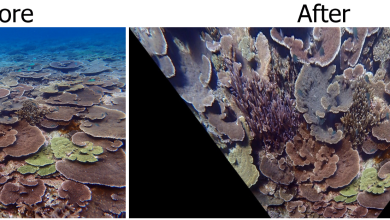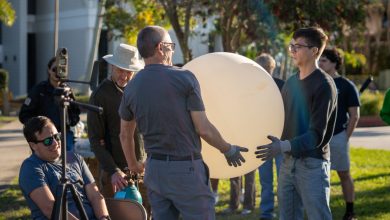From kook to surfer… almost
Greetings from Melbourne Beach! We have been busy “collecting data” for our surf engineering class, and by collecting data what I really mean is that we have been out surfing. It’s a tough job, but somebody’s got to do it! We have had 5 field days throughout this past semester. The waves were on our side each time. The first few trips the waves were not too big, but this gave us time to figure out what we were actually doing. The last two days the waves were fantastic allowing us to “collect” a lot of “data”.
Now, you may be wondering what kind of data we could possibly be collecting while surfing? We actually have two wave gauges (one in the breaking zone and one a little bit deeper) so we can calculate all of the wave characteristics when we get back to the lab. These wave characteristics include the wave height, period, length, speed, steepness, and type of breaking. We also collect data from the board’s movement. We have an instrument inside each of the boards that measures the roll, pitch, and yaw, as well as the vertical, horizontal, and side-to-side movements as we surf. The data we get from this instrument is a little bit harder to work with because it involves aligning many different coordinate systems. Once we figure all that out we look at the data collected from different runs and try and compare them.
 In the picture we see Andrew and Dr. Weaver catching a wave during our second field day. We have measuring tape down each of the rails so we can see how much of the board is in the water. This helps us determine how much drag force is acting on the board due to the water. We have two cameras in the water and a camera on shore to help us visualize our data, and of course get awesome pictures of us surfing.
In the picture we see Andrew and Dr. Weaver catching a wave during our second field day. We have measuring tape down each of the rails so we can see how much of the board is in the water. This helps us determine how much drag force is acting on the board due to the water. We have two cameras in the water and a camera on shore to help us visualize our data, and of course get awesome pictures of us surfing.
Dealing with mother nature can be a bit of a challenge some times. On our fourth field day we had awesome waves to surf. Unfortunately, we also had to get our wave gauges beyond the breakers. This wouldn’t have been too bad except that each of our gauges is connected to a large cement anchor block. We all knew that the deployment could get very dangerous very fast that day. As we were swimming out, the waves kept wanting to push everything back to shore. Everyone made sure to stay clear of the raft when a large wave came because those cement blocks were not going to land easy. The first attempt we all ended up just letting go of the raft. Getting knocked out was not in the deployment plan that day! On our second attempt we were able to safely swim the instruments out between two sets. This was probably the biggest challenge we have faced in the field so far. This reminded us that even though the big waves are fun to surf, they can humble us at any moment.






Now it seems to happen to surfing what happens to all fields of competitive sports at a certain stage: “scientification”. In the beginning often a few natural talents take home all the trophies as well as make the particular sport popular. Then the masses join in and competition at the top gets fiercer. Then an international field emerges of some “top guns” who are so close together that eventually all technical refinements have been found and tried out. Then one needs to start to measure the physics and biomechanics and from there better running shoes and skies emerge. I had always wondered if that had reached surfing as well yet but I thought that with each wave being different the sport had conditions too idiosyncratic to control and laboratory would be out of the question (well, skiers now use aircraft wind channels …). But this “… involves aligning many different coordinate systems …” tells me you are trying to find the patterns that control these idiosyncrasies. Next step would be to measure the athletes’ body movements too and, ro some of the former naturals’ chagrin, you may arrive at a set of repetitive steps that lay the groundwork for a “code of conduct” in becoming an accomplished surfer …